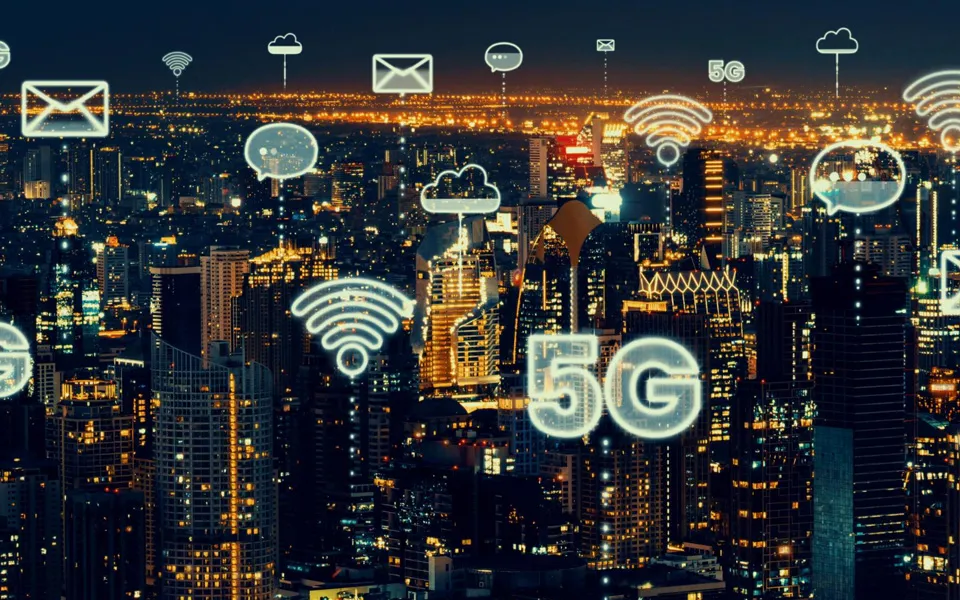4 Types of Wireless Networks

1. Wireless Local Area Network (WLAN)
Definition:
A Wireless Local Area Network (WLAN) is a group of colocated computers or other devices that form a network based on radio transmissions rather than wired connections. It allows devices within a limited area (such as a building or campus) to communicate wirelessly via Wi-Fi technology.
Components:
– Access Points (APs): These devices broadcast wireless signals to connect devices (such as laptops, smartphones, and tablets) to the network.
– Wireless Routers: Connected to a modem, routers serve as both APs and gateways to the internet.
Infrastructure vs. Ad Hoc Mode:
– Infrastructure Mode (Home or Office WLAN):
– Endpoints (devices) are connected and communicate through a base station (usually a wireless router).
– The wireless router often provides internet access as well.
– Ad Hoc Mode:
– Endpoints connect directly to each other without a base station.
– Commonly used for peer-to-peer communication (e.g., file sharing).
Security:
– WLANs are more vulnerable to breaches than physical networks.
– Common security methods include MAC address filtering, encryption (WEP, WPA, WPA2), and strong passwords.
Use Cases:
– Home Wi-Fi networks, office networks, public hotspots, and educational campuses.
2. Wireless Metropolitan Area Network (WMAN)
Definition:
A Wireless Metropolitan Area Network (WMAN) spans multiple locations within a geographic area (typically the size of a city). It provides wireless connectivity using cellular network technologies (e.g., 2G, 3G, 4G LTE, and 5G).
Characteristics:
– Larger coverage area than WLAN but smaller than WWAN.
– Point-to-point or point-to-multipoint connections.
– Often governed by a single entity (e.g., an ISP or government).
– Examples include city-wide networks, mesh networks, and MANETs.
Technologies:
– WiMAX: Based on IEEE 802.16 standards, offering high-speed wireless connectivity.
– LMDS (Local Multipoint Distributed Service): Broadband microwave technology for voice, data, and internet services.
Applications:
– Mobile communication, fleet management, temporary networks, and IoT implementations.
3. Wireless Personal Area Network (WPAN)
Definition:
A Wireless Personal Area Network (WPAN) connects devices within a user’s immediate area (typically within 10 meters). It’s centered around a person’s workspace and uses wireless communication.
Examples:
– Bluetooth devices (e.g., wireless mouse, wearable tech, smartphones).
– USB flash drives, digital cameras, and smart home controllers.
Technology:
– WPANs use short-range wireless protocols (e.g., Bluetooth) for data transfer.
4. Wireless Wide Area Network (WWAN)
Definition:
A Wireless Wide Area Network (WWAN) covers a larger geographical area than WLAN or WPAN. It provides regional, nationwide, or global wireless coverage using cellular technologies (e.g., 4G LTE, 5G).
Characteristics:
– Completely wireless connections.
– Uses cellular networks for data transfer.
– Provides connectivity for laptops, tablets, and other devices.
Advantages:
– Global coverage, flexibility, better security than WLAN, and cost-effective backup.
Applications:
– Mobile communication, fleet management, and IoT implementations.
Remember that each type of wireless network serves specific purposes, and their adoption depends on factors like coverage area, data speed, and security requirements.
Bluetooth Tethering (Optional)
While slower than Wi-Fi or USB tethering, Bluetooth tethering offers an alternative connectivity option:
- Activation: Enable Bluetooth tethering within the “Hotspot & Tethering” settings menu on your Android device.
- Pairing Devices: Connect other devices to your phone’s tethering source via Bluetooth pairing.








